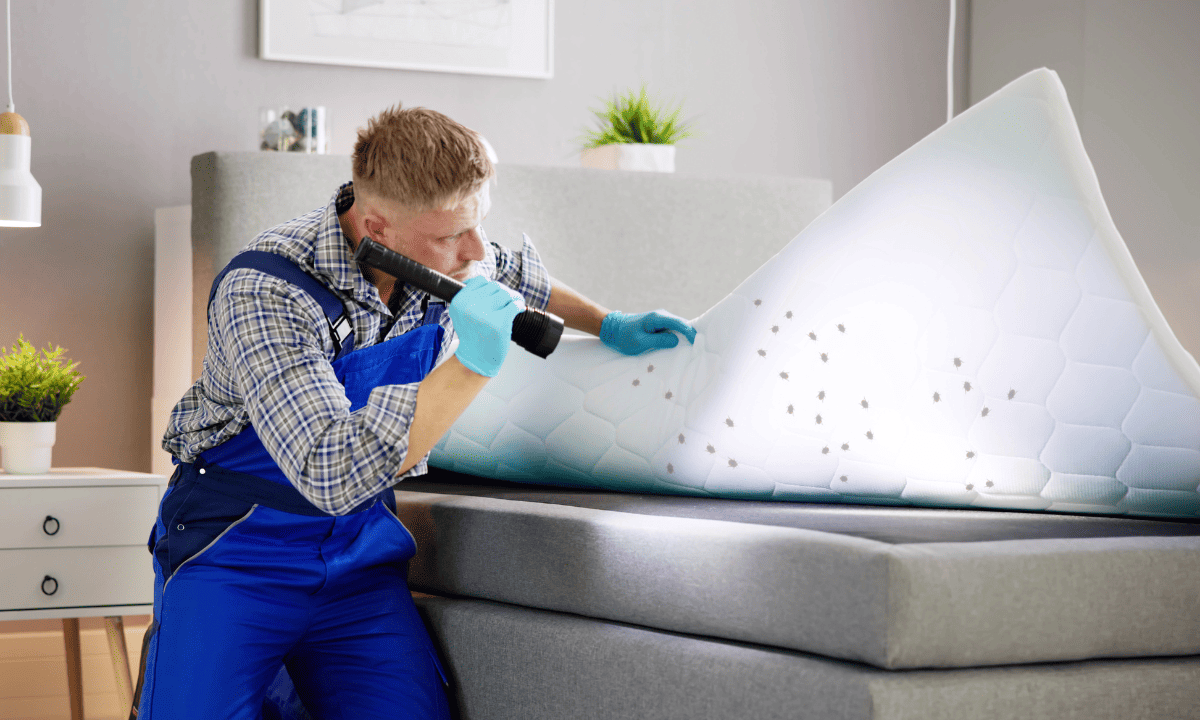
Bed bugs are hardy insects that can survive for relatively long periods without feeding. How long can bed bugs live in a sealed plastic bag? If you seal bed bugs in a plastic bag, their survival time will depend on various factors such as temperature, humidity, and the life stage of the bed bugs.
Under optimal conditions (around room temperature), adult bed bugs can survive for several months without a blood meal. However, nymphs (young bed bugs) and eggs are more vulnerable and may not survive as long without a blood source. Lower temperatures and low humidity can also extend the time it takes for bed bugs to perish without a blood meal.
It’s essential to note that sealing bed bugs in a plastic bag is not a foolproof method for eliminating an infestation. Bed bugs can be quite resilient, and professional pest control measures are often necessary for effective eradication. If you’re dealing with a bed bug infestation, it’s recommended to consult with a pest control professional to develop a comprehensive and effective strategy for elimination.
The issue of bed bugs and their ability to survive in sealed plastic bags
- Bed bugs are notorious for their resilience and adaptability.
- They can infest a variety of environments, including homes, hotels, and public transportation.
- One common method to control these pests is by sealing infested items in plastic bags.
- However, the effectiveness of this strategy depends on several factors, including the duration of containment.
Factors affecting the lifespan of bed bugs in a sealed plastic bag
- Temperature: Higher temperatures can accelerate bed bug metabolism, potentially leading to a shorter lifespan.
- Oxygen Levels: Bed bugs require oxygen to survive; limited air supply in a sealed bag could suffocate them over time.
- Developmental Stage: Younger bed bugs, known as nymphs, may have different survival rates compared to adults.
- Time: The length of time bed bugs can survive in a sealed plastic bag varies, but they can live for several months without a food source.
Lifespan of bed bugs
Overview of the typical lifespan of bed bugs
- Bed bugs typically live for about two to four months.
- An adult bed bug can survive longer without feeding compared to a nymph.
- In ideal conditions, with regular feeding, some may live for about a year.
Factors that can influence the lifespan of bed bugs
- Availability of a host for feeding is critical for bed bug survival and reproduction.
- Environmental conditions, like extreme heat or cold, can significantly shorten their lifespan.
- Chemical treatments can effectively reduce bed bug lifespans and eradicate infestations.
- Access to hiding spots and harborage areas can support longer lifespans by offering protection.
The survival capabilities of bed bugs
Bed bugs’ resilience and ability to survive without a host
- Bed bugs can endure lengthy periods without a blood meal, sometimes several months.
- This resilience allows infestations to persist even in unoccupied spaces.
- Adults exhibit greater survival rates during these fasting periods than nymphs.
How bed bugs can survive in various environments
- These pests are not limited to the bedroom; they may inhabit any area where humans rest.
- Bed bugs can live in a wide range of temperatures, from nearly freezing to 122°F (50°C).
- However, survival at the extremes is typically shorter due to stress on their physiological processes.
- Observations show bed bugs avoiding areas treated with pesticides, suggesting behavioral resistance.
Sealed plastic bags as a containment method
Effectiveness of sealed plastic bags in controlling bed bug infestations
- Sealed plastic bags cut off oxygen, leading to asphyxiation of bed bugs over time.
- Containment strategy restricts bed bugs’ movement, preventing them from reaching new hosts.
- Items like clothing and bedding can be treated and stored in bags, preventing re-infestation.
How sealed plastic bags can help in reducing bed bug populations
- Containment in bags isolates infested items, reducing cross-contamination to other areas.
- Heat-treated items placed in sealed bags ensure eliminated bugs can’t escape.
- Regular use of sealed bags for storage can serve as a proactive measure against bed bugs.
Laboratory studies on bed bug survival in sealed plastic bags
Research findings on the lifespan of bed bugs in sealed plastic bags
- Laboratory experiments have indicated that bed bugs can survive for extended periods in sealed plastic bags.
- The length of survival varies significantly depending on temperature and developmental stage of the bed bugs.
- Adult bed bugs generally exhibit a greater endurance in these sealed conditions compared to nymphs.
Factors that can affect bed bug survival in this environment
- Oxygen levels within the plastic bags play a crucial role in determining the survival of bed bugs.
- Ambient temperature: warmer conditions can increase metabolic rates, potentially shortening bed bug life spans.
- The absence of a blood meal does not immediately impact adults, as they can endure months without feeding.
Also read:


